#japanese bronze
Text
Open - Living Room

Inspiration for a large, timeless, open-concept living room remodel with a brown floor and dark wood trim but no fireplace
#grey sofa#dark colors#cherry bookcases#built-in bookshelf#black coffee table#japanese bronze#edward wormley coffee table
0 notes
Text

Japan's craftsmen achieve intricate textile patterns with sturdy paper stencils for katazome (paste-resist dyeing). These hand-cut designs, now collectors' items, had a large influence on European decorative art in the early 1900s.
At Home With Japanese Design: Accents, Structure and Spirit, 1990
#vintage#vintage interior#1990s#90s#interior design#home decor#collection#stencil#antique#bronze#lamp#trunk#wood paneling#Meiji period#table lamp#Japanese#style#home#architecture
142 notes
·
View notes
Text


~ Dragon Head.
Place of origin: Japan
Period: Heian period (794-1185)
Date: A.D. 12th century
Metal: Bronze
#history#museum#archeology#archaeology#12th century#asia#asian#asian arts#japan#japanese#dragon#dragon head#heian era#heian period#bronze
409 notes
·
View notes
Text
@trooperette97 submitted: Coming back to show you more garden friends
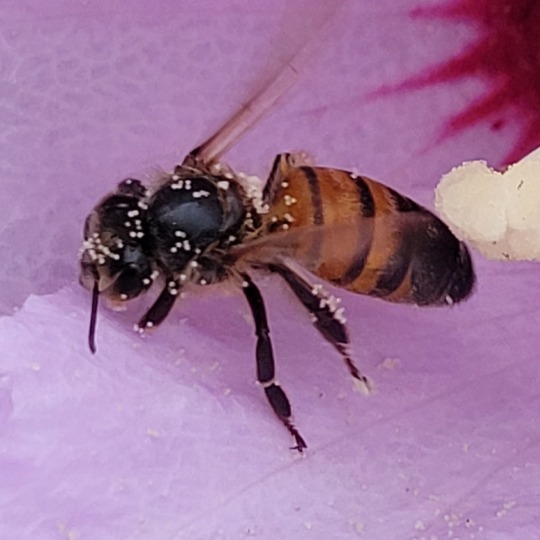
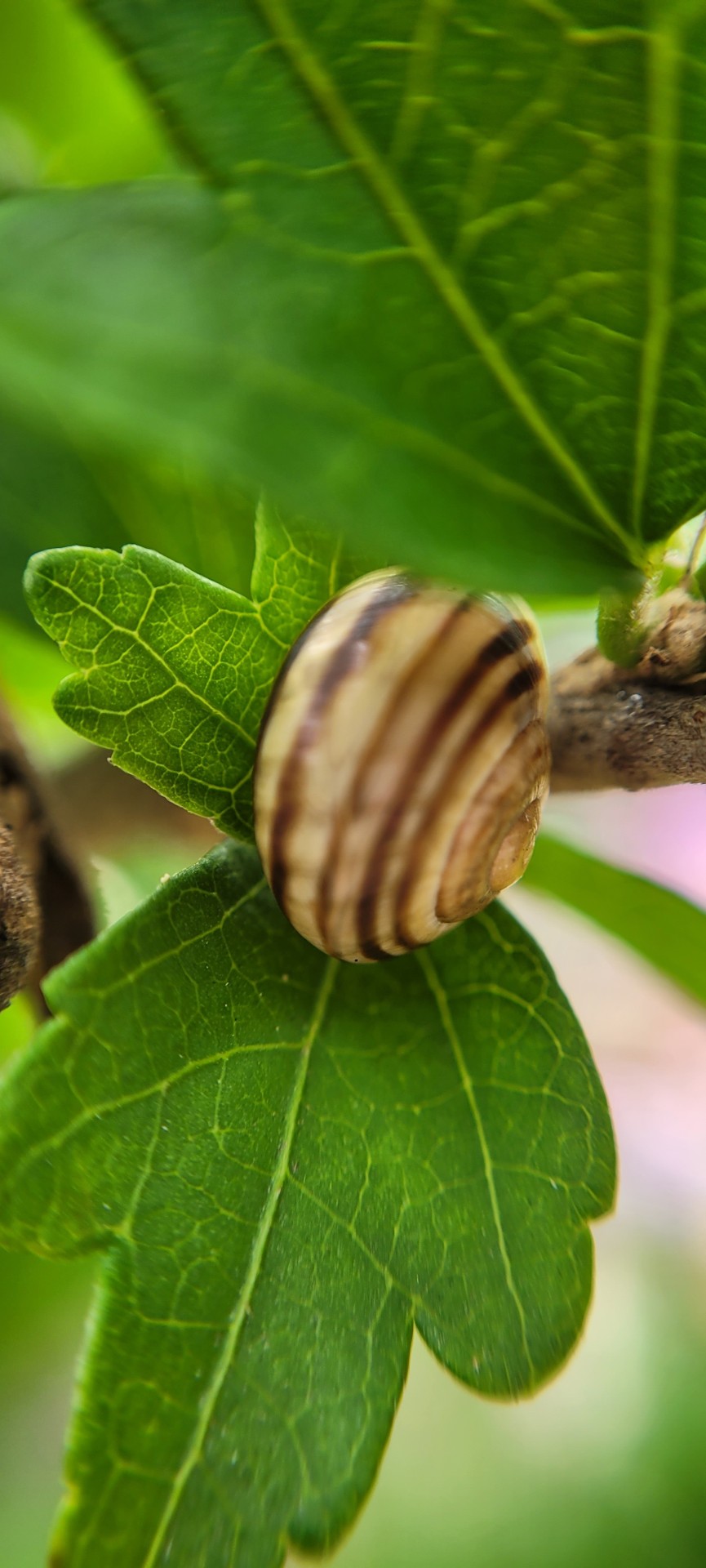

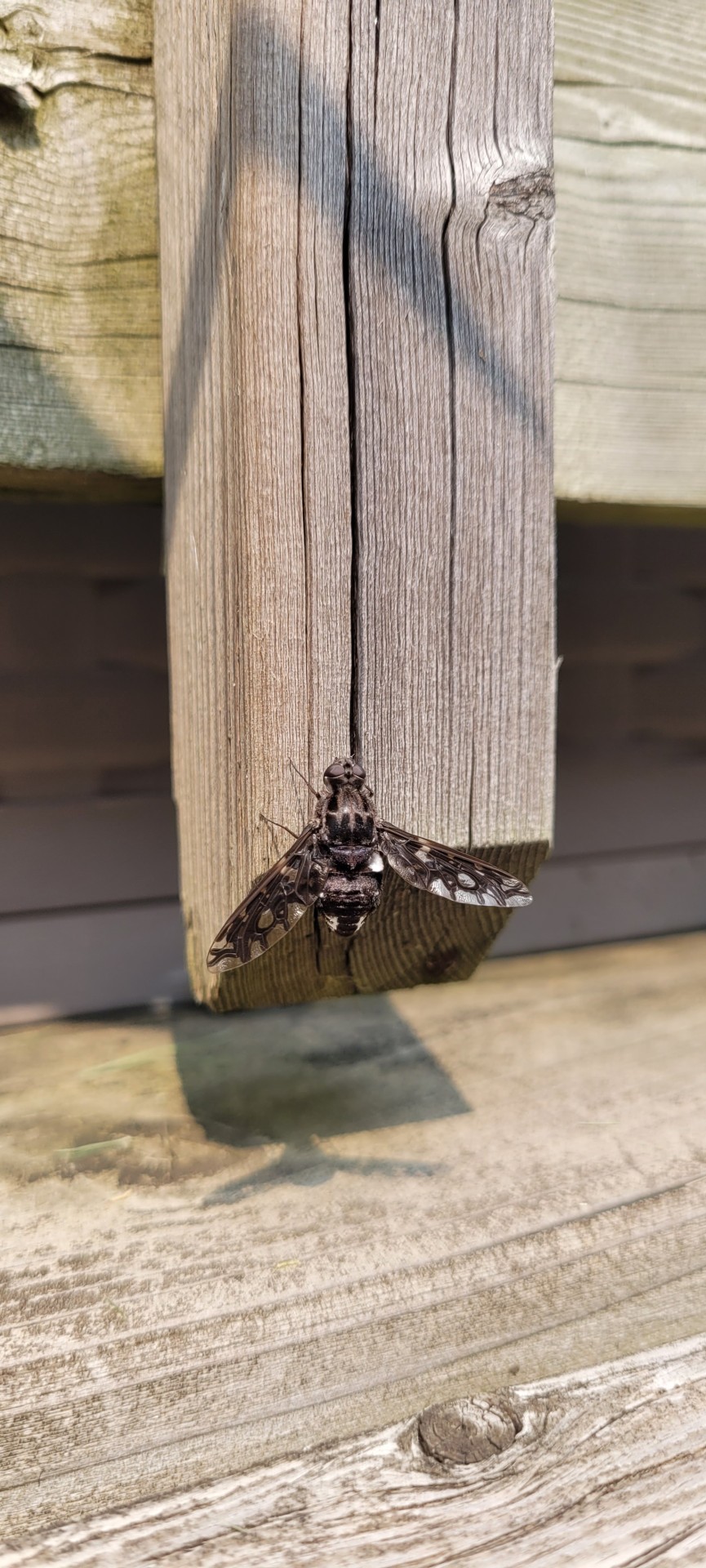
And a couple of whoops (one blurred out just as I took the pic and one 'did not realize what was going on till I took the pic')
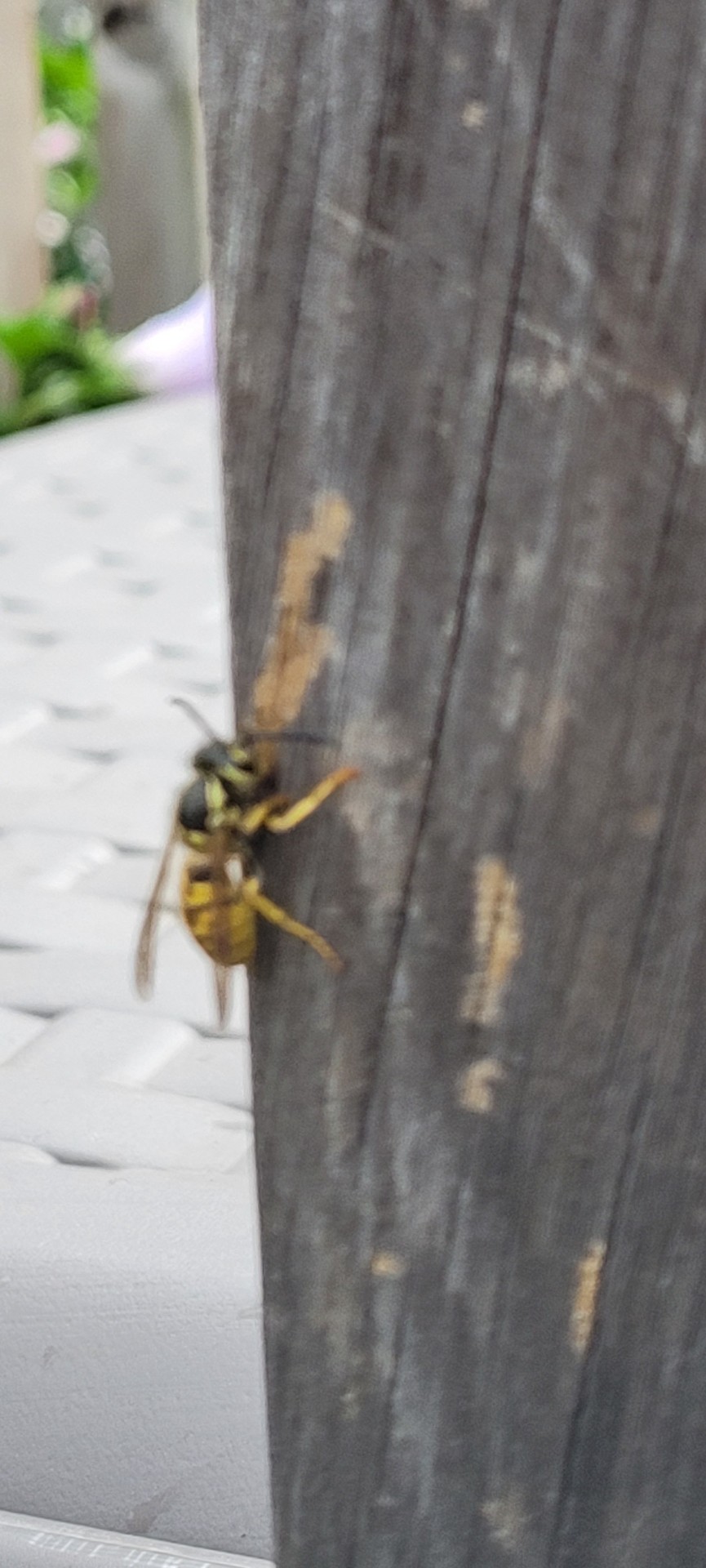
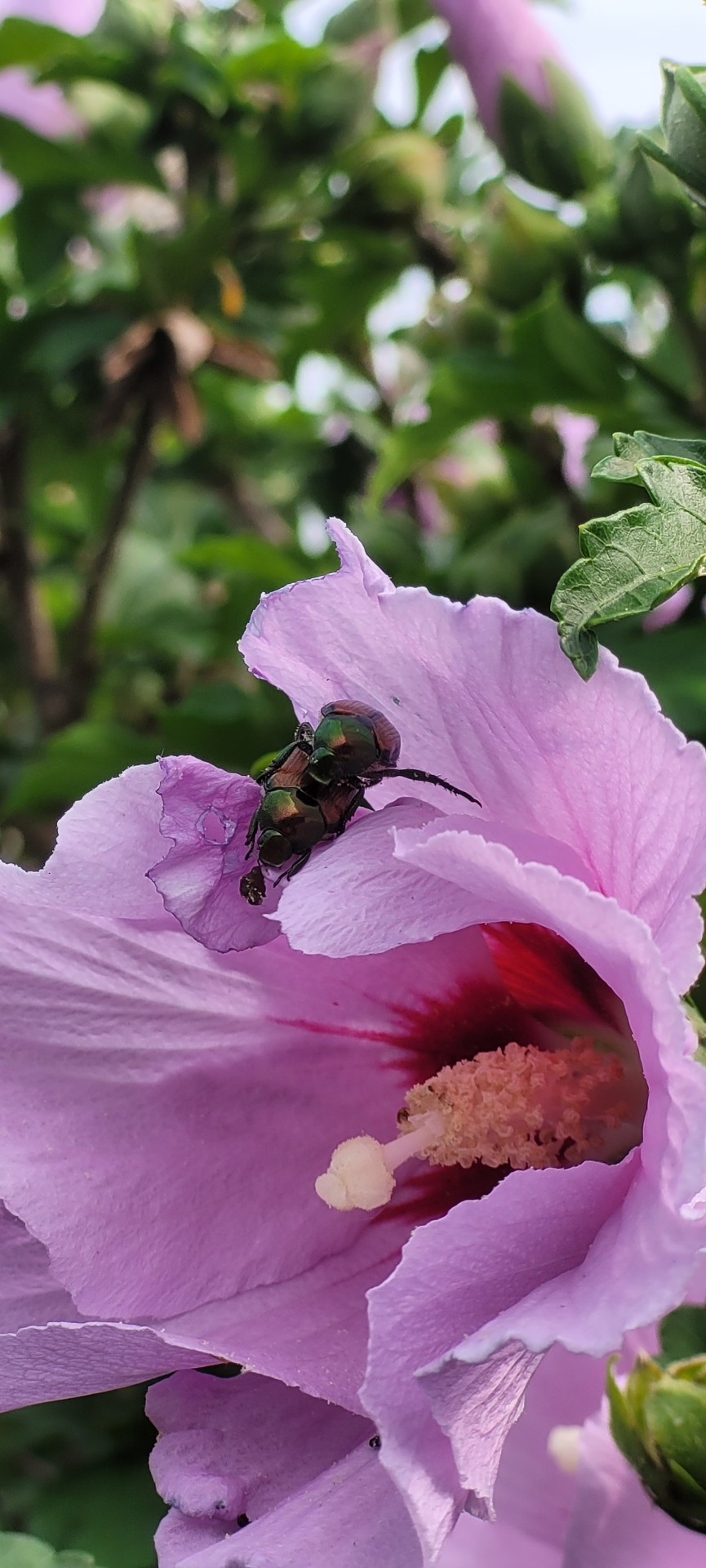
Also you would happen to know what this Lil one is? (Toronto area)
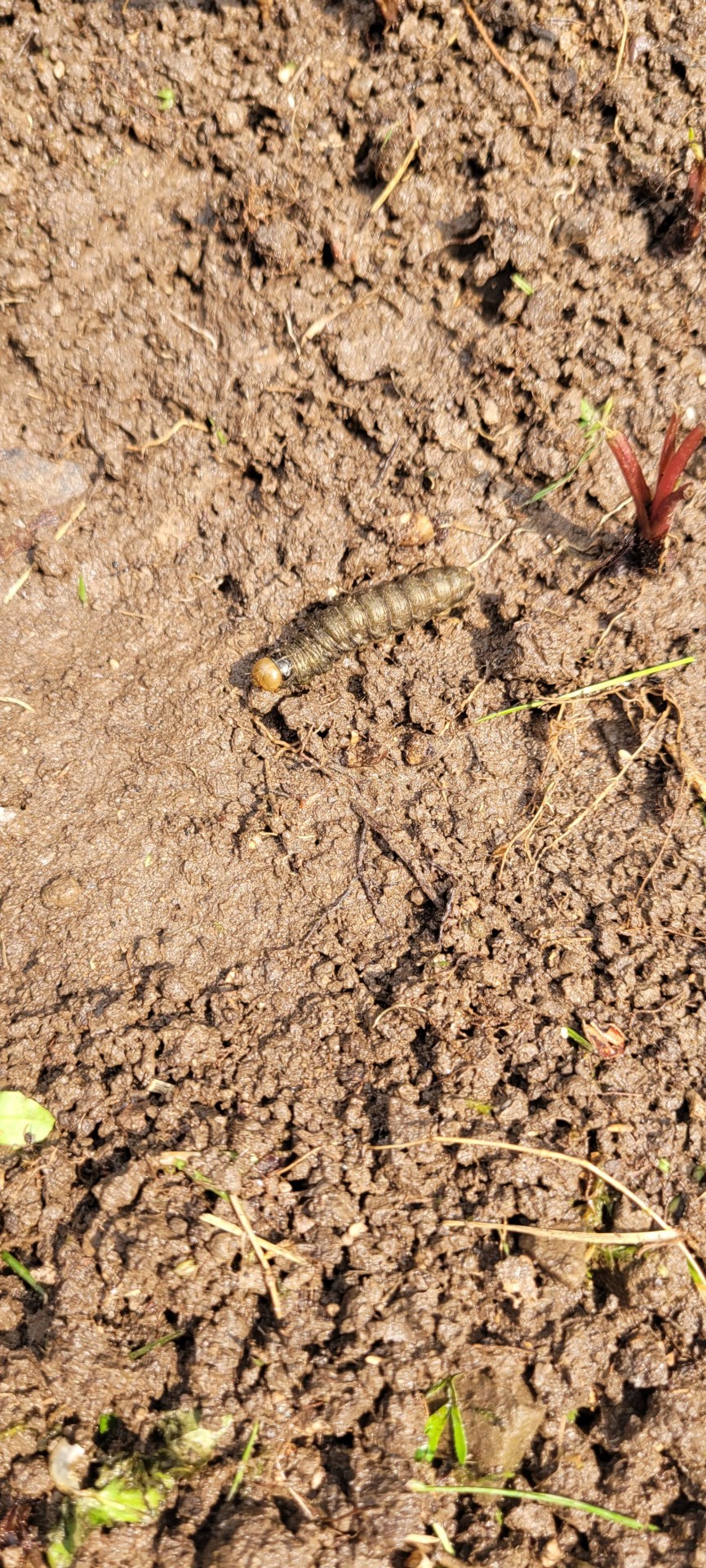
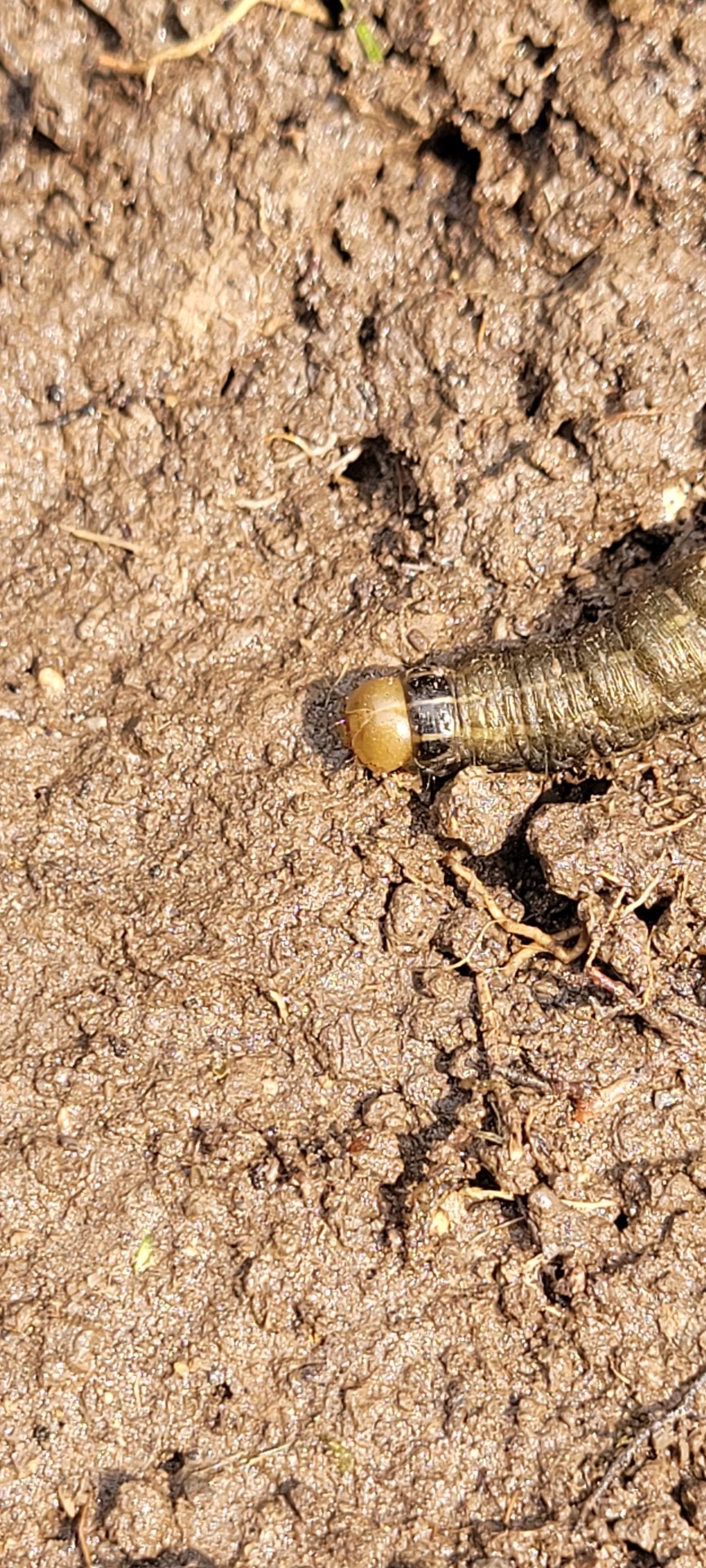
So many good garden friends. I am especially fond of the tiger bee fly. Did you mean you wanted an ID on the caterpillar? If yes then it's a moth caterpillar, probably a cutworm in the family Noctuidae, and my educated guess is a bronzed cutworm moth, Nephelodes minians. But don't quote me on that because noctuids often look similar!
#animals#insects#bugs#submission#bee#snail#grasshopper#tiger bee fly#bee fly#fly#diptera#wasp#beetle#scarab beetle#japanese beetle#moth#caterpillar#larva#cutworm#bronzed cutworm#noctuidae#long post
87 notes
·
View notes
Text

Bronze Tomb in the Tōshō-gū Shinto shrine in Nikkō, Japan
Japanese vintage postcard
#tarjeta#bronze#postkaart#japanese#nikkō#sepia#shinto#historic#tsh#photo#japan#shrine#postal#briefkaart#g#photography#nikk#vintage#ephemera#tomb#ansichtskarte#old#postcard#postkarte#the tōshō-gū#carte postale
12 notes
·
View notes
Photo

Deep Bronze Japanese Laurel (#4c4d04 to #318806)
21 notes
·
View notes
Text
Fabulous find for #FishyFriday:
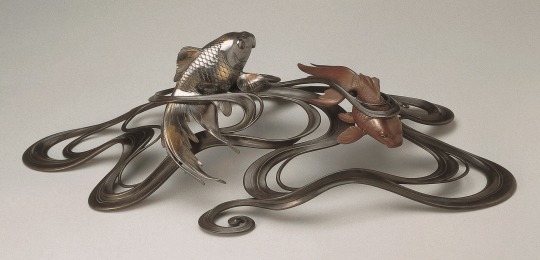
Oshima Joun (Japanese, 1858-1940)
Ornament of Fish in Waves (Okimono), c. 1900
bronze, silver, gilt, shibuichi and shakudo
13.1 x 48.7 cm
Khalili Collections M159
"An okimono of stylized bronze waves among which swim two shubunkin, one cast in richly patinated copper, the other in oxidized silver with partially gilt areas, the eyes of shibuichi, shakudo, and gilt. The fish naturalistically modelled, supported by the highly stylized waves.
Oshima Joun (1858-1940), given name Yasutaro, was the son of the cast-metal worker Oshima Takajiro, whose father Yasubei had started the family business. He succeeded to the business in 1877 and took the name Joun. He used the go Shokaken.
He rapidly built up his business, and in 1879 had eleven assistants, selling mainly through Murakami Heishichi and a French client. Later he worked through the commissioner Honda. He first exhibited in Paris in 1878. In 1879 he was working with the Sanseisha Company of Tokyo, specifically on the great bronze figure of the Dragon King of the Sea, made for the Second National Industrial Exposition of 1881, that is so markedly similar to the figure M 17 in the Collection by Otake Norikuni (see Impey and Fairley, The Dragon King of the Sea, No. 11). He taught at the Tokyo Art School from 1887 until 1932.
A similar but slightly larger group of five carp was exhibited in the Paris Exposition of 1900, illustrated in the Fine Arts Magazine catalogue. Another similar silver group of carp was exhibited in the Japan-British Exhibition of 1910, illustrated on p. 184 of the English version of the catalogue, where it is listed under the name of the exhibitor Yezawa Kingoro, whereas in the (unpaginated) Japanese edition it is under the name of Oshima Joun. He was praised for his renditions of carp by Harada in ‘Metal-work’ p. 101.
O. Impey, M. Fairley (eds.), Meiji No Takara: Treasures Of Imperial Japan: Metalwork Vol II, London 1995, cat. 102. J. Earle, Splendors of Imperial Japan: Arts of the Meiji period from the Khalili Collection, London 2002, cat. 198, pp. 284–5."
#fish#metalwork#silver#bronze#okimono#Japanese art#East Asian art#Asian art#decorative arts#Oshima Joun#1900#19th century#20th century#Fishy Friday#Khalili Collections#animals in art
60 notes
·
View notes
Text
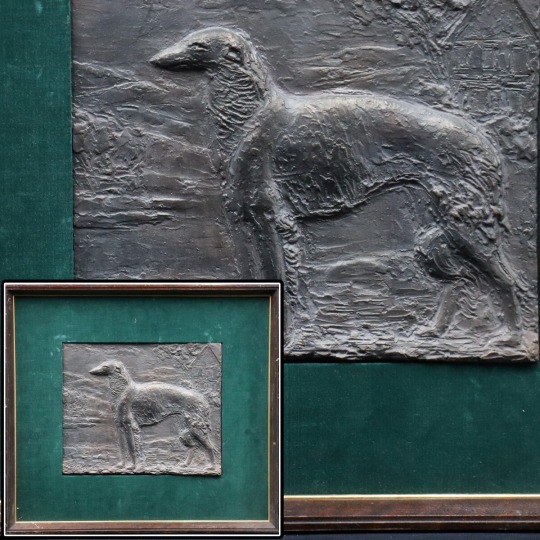
Kiyoshi Nakagawa Dog Statue Bronze Relief Framed Participation in the Japanese Exhibition Chairman of the Japan Sculpture and Plasticity Society Borzoi
7 notes
·
View notes
Text
ough trying to decide how much japanese terminology i can feasibly use in this fic when it’s like. only LOOSELY based in tokugawa japan…………..
#chilaios#like i’m never gonna say the words tokugawa or japan i don’t think??#but should i call it the yoahiwara district or the red light district??? or neither???#ugh i’m overthinking this i KNOW#like all the research i did about historical japanese currency and then i just decided to use gold/silver/bronze coins#OUAWGH#i have brain worms!!!!!
6 notes
·
View notes
Photo



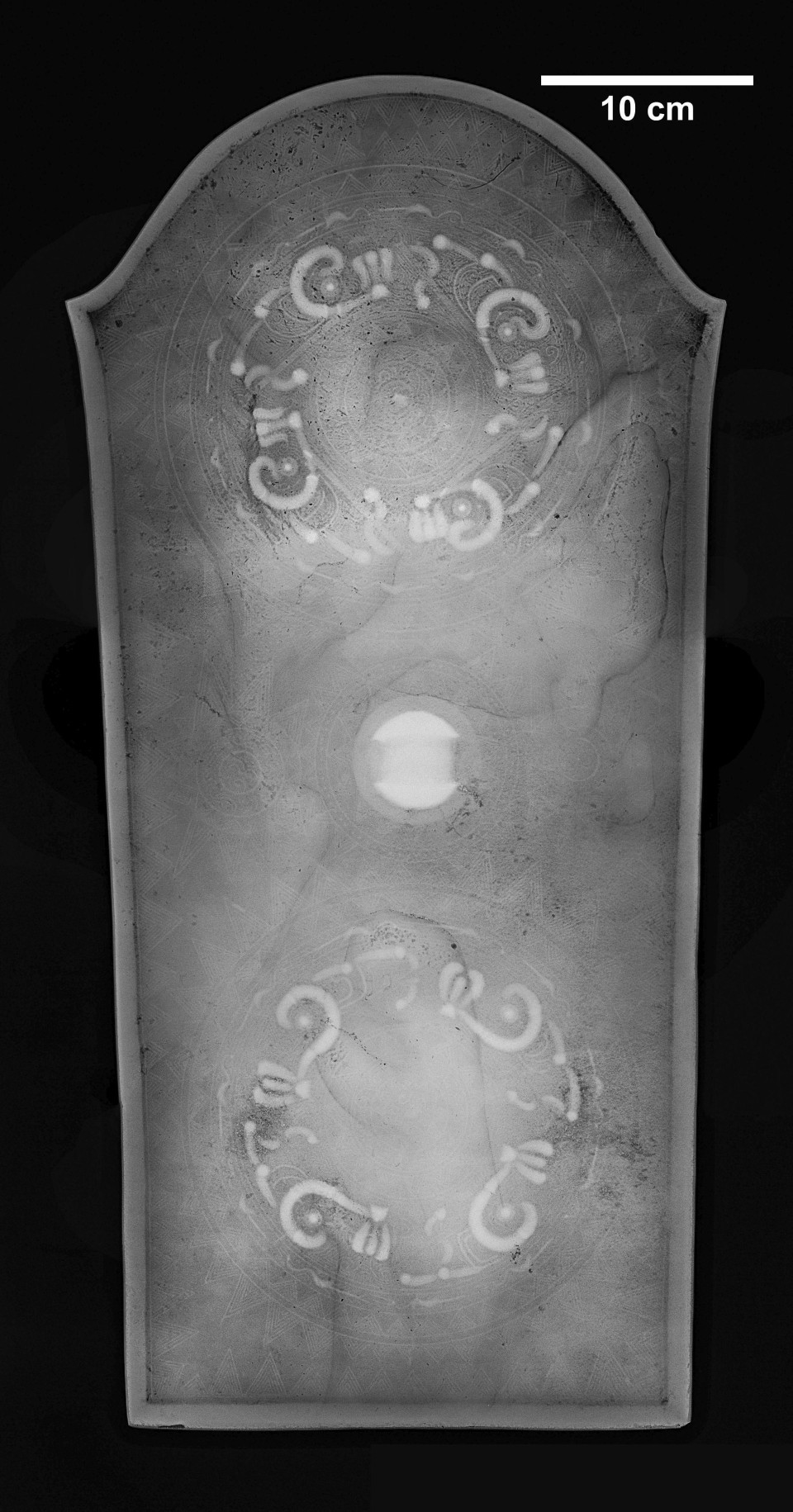

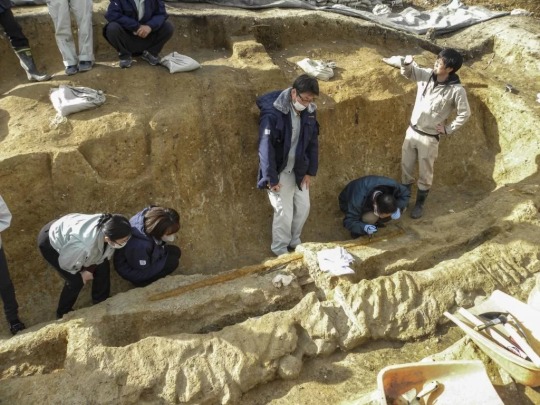

National Treasure 2.3-Meter Sword and Mirror Discovered in Japan
The largest bronze mirror and the largest “dako” iron sword in Japan were discovered at the Tomio Maruyama burial mound in Nara.
Experts say the twin discoveries from the Tomio Maruyama Tumulus last November can be classified as national treasures, with the shield-shaped mirror being the first of its kind.
The Nara Municipal Buried Cultural Properties Research Center, which excavates and researches Tomiomaruyama kofun, and the Nara Prefectural Archaeological Institute of Kashihara, which assists in the excavation, announced the discoveries on Jan. 25.
The 2.3-meter sword with a meandering blade is also the largest iron sword made in that period in East Asia.
The patterned surface of the mirror carries the designs of two more common “daryu” mirrors, distinctive with its designs based on imaginative creatures, which have been found mainly in western Japan.
The shield-shaped mirror is 64 cm in length, 31 cm in width at most, and weighs 5.7 kilograms. Typically, bronze mirrors that are found at archaeological sites are rounded, but this one is shield-shaped.
The sword is the oldest of the dako swords, distinguished by their wavy, snake-like shapes, which give rise to their name. As burial goods, more than 80 other dako swords have been discovered throughout Japan.
The latest sword has markings of a sheath and handle, and together, its length measures 2.6 meters, more than dominating the last longest dako sword discovered at around 85 cm.
“(These discoveries) indicate that the technology of the Kofun period (300-710 AD) are beyond what had been imagined, and they are masterpieces in metalwork from that period,” said Kosaku Okabayashi, the deputy director for Nara Prefecture’s Archaeological Institute of Kashihara.
Mirror and shields are considered to be tools to protect the dead from evil spirits. The sword is thought to have been enlarged to increase its power, and the possibility of its use as a battle tool is low, researchers said.
The 109-m-diameter Tomio Maruyama burial mound, the largest in Japan and dating to the late 4th century, is believed to have belonged to a significant person who supported the Yamato rulers at the time.
The burial chamber where the discoveries were made is thought to have belonged to someone close to that person, according to Naohiro Toyoshima, an archaeology professor at Nara University. He also said that the ritualistic sword and the shield-shaped mirror may indicate that the individual was involved in military and ritualistic matters.
By Leman Altuntaş.
#National Treasure 2.3-Meter Sword and Mirror Discovered in Japan#dako iron sword#bronze mirror#Tomio Maruyama burial mound#ancient grave#ancient tomb#ancient artifacts#archeology#archeolgst#history#history news#ancient history#ancient culture#ancient civilizations#ancient japan#japanese history
32 notes
·
View notes
Text

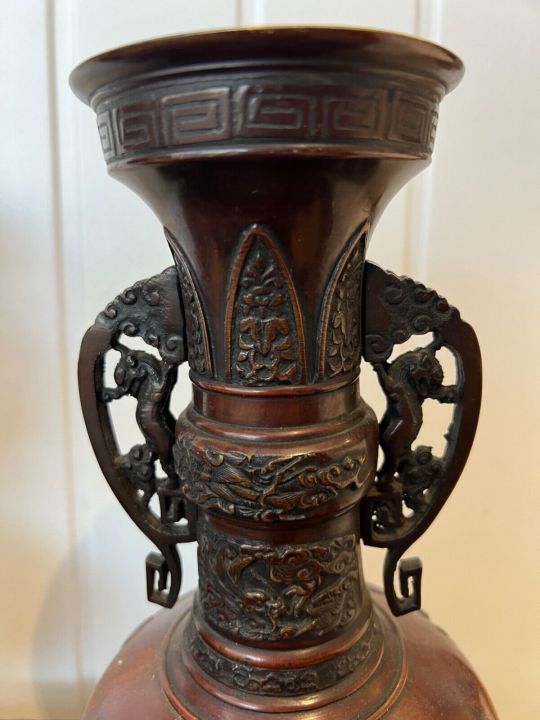

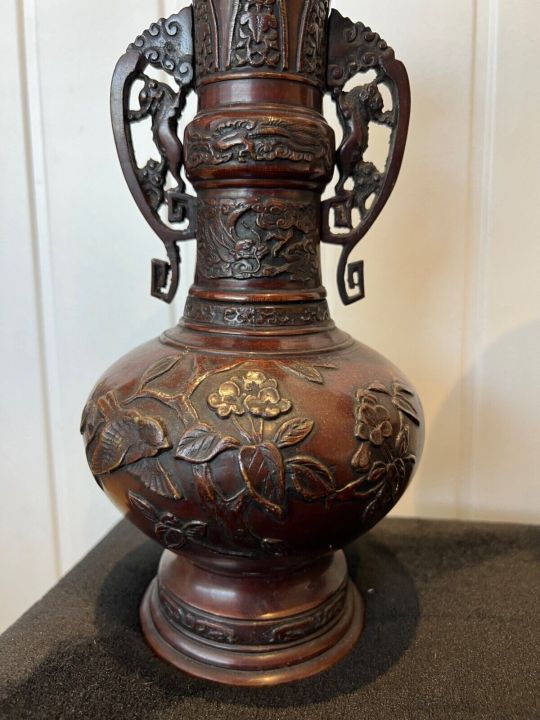

PAIR OF 19th CENTURY RARE ORIENTAL ANTIQUE JAPANESE URN MEIJI CAST BRONZE VASES ebay vintage-oil-paintings
3 notes
·
View notes
Photo

The unusual basket, almost a yard wide, is a kaiko-zaru (silkworm basket) and dates to the turn of the century when handspun silk was still a cottage industry... Mr. Saint-Gilles uses it to display his collection of omamori, protective talismans still sold at temples and shrines.
At Home with Japanese Design, 1990
#vintage#vintage interior#1990s#interior design#home decor#90s#entryway#vignette#silkworm basket#candles#bronze#sculpture#plinth#ikebana#omamori#collection#Japanese#style#home#architecture
844 notes
·
View notes
Photo
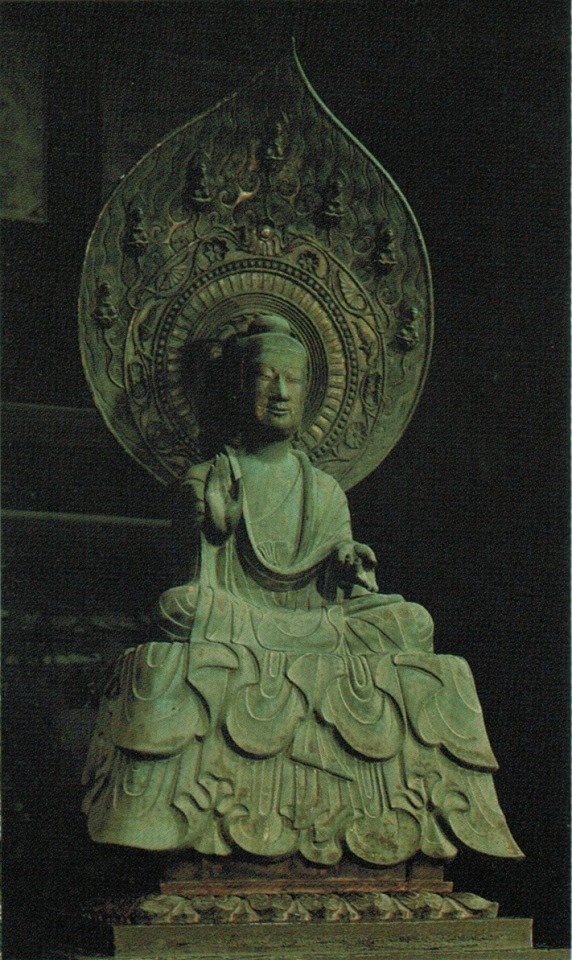
A gilt bronze sculpted image of Yakushi Nyorai (薬師如来), the buddha of healing & medicine, enshrined in the main hall of Hōryūji Temple (法隆寺) in Ikaruga, Nara Prefecture, completed in 607 after having been commissioned by Empress Suiko (推古天皇) and the regent Shōtoku Taishi (聖徳太子) for the postmortem well-being of Emperor Yōmei (用明天皇), i.e. her brother and his father
Image from page 10 of a booklet acquired at the temple February 26, 1994
#japanese art#buddhist art#薬師如来#yakushi nyorai#yakushi#奈良県#nara prefecture#斑鳩町#ikaruga#法隆寺#horyuji#japanese history#推古天皇#suiko tenno#聖徳太子#shotoku taishi#用明天皇#yomei tenno#bronze sculpture#crazyfoxarchives
92 notes
·
View notes
Text

Buddha
#japanese friendship garden#san diego#california#original photographers#photographers of tumblr#bronze statue#photo#digital#bronze sculpture
2 notes
·
View notes
Photo

Jar
“When rice cultivation and bronze and iron metallurgy were introduced, probably through Korea, the isolated and self-sufficient life of the Jomon gave way to a communal society organized to carry out the demanding agricultural cycle...
The social and aesthetic character of the transformed culture of Yayoi is vividly reflected in its ceramic vessels.” - MET
#pottery#japanese art#jomon culture#yayoi culture#neolithic#bronze age#iron age#japanese art history
13 notes
·
View notes
Text

2 notes
·
View notes